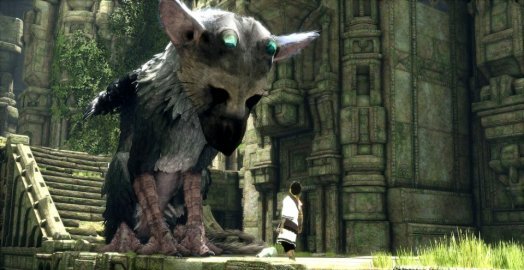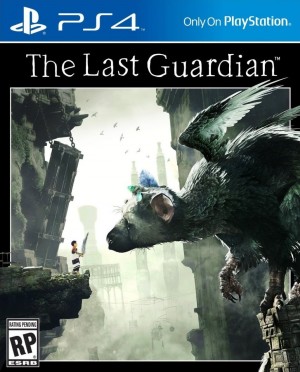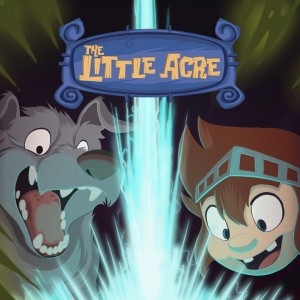Review for The Last Guardian

Sony’s The Last Guardian had some very high expectations to live up to, being the spiritual successor to Ico and Shadow of the Colossus, both cult classics in their own right. A ten-year development cycle didn’t help matters any. Using a similar minimalist design approach as its predecessors and focused on creating a meaningful relationship between the unnamed player character and a giant cat-bird-rodent hybrid, The Last Guardian is intended to provide a unique experience for all gamers, while offering returning players an immediate sense of familiarity. The PlayStation 4 exclusive isn’t entirely without its hiccups, but it succeeds spectacularly in most areas and turns out to have been well worth the wait.
Seeing how fans of Shadow of the Colossus related to the bond between silent protagonist Wander and his horse Agro, The Last Guardian’s designer and director Fumito Ueda set out to create a game that revolves around the emotional attachment between the player character and a digital companion. The result is essentially just that: a vehicle to build a sense of connection and make players really care about their on-screen ally. To that end, and in keeping with the style of the previous two games, the narrative is fairly limited and unobtrusive. It’s not a mystery, a thriller, or a comedy; it’s a game about a bond of friendship, pure and simple.
The adventure opens as the nameless player-controlled boy awakens in a cave, his skin covered with mysterious tattoos. There’s no explanation of who he is or how he got there; not until much later anyway. The game is actually a flashback, with occasional narration by the boy, now grown into a man. There’s little time to wonder about the backstory, though, as an immense, slumbering creature chained up right next to the boy is immediately revealed. Described as a man-eating beast by the narrator, the creature named Trico is wounded, with spear-ends still implanted in his leg and shoulder, and behaving aggressively and hostile like any cornered animal would.
The initial thirty minutes or so serve to teach you how to control the boy and interact with Trico. More importantly, they allow a relationship to form right away. The first several actions that need to be performed include feeding Trico and tending to his wounds, before freeing him from his chains. This builds up trust between the two, and made me feel like I was bonding with the monstrous-yet-cuddly behemoth. As the game progresses, the two become an inseparable pair, and Trico will cry out loud in distress if you move too far away from him. There’s a real sense of boy and beast needing each other, and not just for the platforming’s sake. I would often turn the camera after passing an obstacle to make absolutely sure Trico was getting past it safely, too. The pair help each other overcome environmental obstacles and rely on each other to survive, though sometimes the way past an impediment is to simply clamber onto Trico’s back and let him carry you.
The Last Guardian often defies genre classifications. Some platforming is required, as navigating the environments is what’s normally needed to progress. This includes jumping, running, crawling, balancing, and climbing, as well as some light combat. This is easily my least favorite aspect of gameplay: the boy is small, weak, and for the most part unarmed, and is a poor match for the stone statue soldiers that come to life to harangue him and Trico throughout the game. Luckily, Trico is the proverbial muscle, and does the lion’s share of fighting, with the exception of a few annoying sections when the boy has gone off on his own and it becomes easier to simply dodge around the enemies rather than engage them. Puzzle-solving also factors in, generally involving figuring out how to open a gate, getting to a switch, or clearing a path to move on. Considering the two very differently-sized protagonists, multiple routes must sometimes be found to let each of them continue.
There are numerous instances when this combination of platforming/puzzle-solving is done under pressure, if one or both of the companions find themselves in immediate peril. As the game moves along, both Trico and the boy discover new ways to deal with obstacles: early on, you will find that Trico is able to shoot lightning from his tail to destroy certain obstacles when ordered to do so, while the boy can ride on Trico to cross great chasms and even give Trico commands after they’ve developed a high enough level of trust. What remains first and foremost at all times, though, is the shared experience between the two, making this a sort of narrative-based game without much actual spoken narrative.
Platforming in a three-dimensional space, as slow-paced as it often is in this game, has always come with its own unique challenges, primarily focused around wonky camera controls. The Last Guardian is not immune to this fault, and some tight, enclosed spaces, combined with Trico’s considerable bulk, often make camera control a pesky nuisance to deal with. It’s not an insurmountable challenge, but angling the view correctly to find the path ahead or stick a tricky jump requires a finessed camera manipulation that shouldn’t exist after such an extended development cycle. Luckily, Trico is smart enough to be able to act on his own, so micro-managing his behavior and movements is rarely an added challenge.
Clambering onto Trico’s back and being taken along for a ride is an exhilarating feeling. For most of the game this option is available, and it usually beats running around; in fact, sometimes it’s the only way to get where you need to go. It’s more than a mere convenience, however: grabbing onto Trico’s fur or tail is sometimes the only thing saving the boy from falling to his death, and climbing around on him is the only way to remove any spears that have lanced him during battle. But the controls for these interactions, and to a lesser degree for The Last Guardian in general, are in need of heavy tweaking. Trico is always in motion, which makes it hard to effectively move around on him, especially in the heat of battle. The game’s stripped-down design approach means the boy catches onto things automatically if they’re within reach, but this means disentangling him from Trico can be unnecessarily difficult. I didn’t find the controls as prohibitive during actual platforming – and the respawning system upon death is very forgiving when they do interfere – but to call them tight would be an overstatement.
The entire undertaking would be a wasted effort if it weren’t for the incredibly lifelike AI for Trico. Lacking speech, the beast’s communication rests solely upon his body language and guttural barks, grunts, squeals, and purrs. The level of attention paid to detail in Trico’s movements and reactions is astounding, and could easily be the subject of its very own in-depth analysis. Trico is curious and inquisitive, and will carefully examine bits of the environment if left to his own devices, by poking his snout at it or gently tapping it with his claw. Despite his size, he is fearful of some things, and acts a bit like a big baby the first time he is faced with, for example, an underground lake in a cavernous grotto, which he has to be coaxed into. Helping Trico overcome his fear made me feel giddy with excitement, whooping and cheering at the screen. There is another side to Trico, though. When agitated or faced with a threat, his ears flatten back against his head, his body posture gets more feral and menacing, and he becomes a fearsome opponent. Trico is also fiercely loyal once he’s rescued by the boy, leading to some poignant moments of heightened emotion.
Impressively, the developers have been able to implement so much of Trico’s behavior into the actual flow of gameplay, rarely requiring a separate cinematic to show it off. On one such occasion, Trico and the boy are on opposite sides of a large gate, which can only be opened by pulling a large chain that slowly raises it. During this time, guardian statues scattered around the room come to life and accost the defenseless boy, attempting to drag him through a kind of dimensional portal to his doom. On the other side of the gate, Trico, sensing the danger, calls out in distress, eager to be at his friend’s side. Once the gate has been raised just a crack, Trico pushes his face under and against the opening, attempting to force his way through the gap. Such level of concern Trico shows for the boy throughout the game is touching in a way that’s difficult to put into words.
This isn’t just a one-sided relationship, either. There were numerous times when Trico was in peril that I found myself clutching the controller, frantically searching for a way to help him. Following a fierce battle, Trico can be impossible to communicate with. He’s panting, growling, and still aggressive, and may even snap in your direction. You are actually required to care for and attend to Trico after combat, removing hurtful spears from his body and soothingly petting him – an action that has an immediate, visibly calming effect on him. These scenes are a beautiful touch, as they move well beyond a Quick Time Event or cinematic: you won’t be showing tenderness only because you need to, but because you actually want to. I often ran to Trico’s side after a harrowing experience to reassuringly pat his leg or caress his snout; it just felt right to do. It is great moments like these that build such a strong relationship between the two, and make the whole gameplay experience absolutely unforgettable.
A big part of quickly falling in love with a creature like Trico stems from the visuals and animation used to bring him to life. Trico’s movements are stunningly lifelike, from the way he tilts his head when listening to how the feathers covering his body will individually flutter when they catch a breeze. A myriad of other little nuances add to the illusion of authenticity: during battle, Trico’s feathers all bristle up the way fur on a dog or cat would; petting Trico will make him bend his head down and close his eyes in bliss, and even sprawl out in hopes of a belly rub. The affection between the two characters is what really sells the experience. At the same time, the fact that the game was initially designed for the PlayStation 3 is evident, as the graphics overall are more stylized than realistic, and environments are generally a far cry from the capabilities of the PS4. That’s not to say they’re ugly or unsightly; the game’s epic finale, especially, sports some gorgeous visuals and picturesque vistas.
One of the unsung heroes of The Last Guardian has to be its incredible architecture. Immediately upon exiting the first cave, and throughout the game’s ten-or-so-hour runtime, you find yourself in a mysterious world full of towering ruins seemingly piercing the clouds, crumbling bridges spanning bottomless gorges, and moss-covered walls already being reclaimed by nature. Who built these structures, and why? Where are the builders now? What do the enigmatic runes and symbols etched everywhere mean? There are never any satisfactory answers given to these questions, which I quite like. We aren’t meant to know it all. Many mysteries remain. What ultimately impressed me is that the ruins and structures aren’t just background filler; at some point you will make your way to, and actually traverse, most of them. But the real payoff comes when things fall apart: there’s nothing like the thrill of Trico and the boy running and leaping for their lives across a wooden scaffolding as it’s crumbling beneath their feet into the abyss below, escaping through teamwork and only barely in the nick of time.
Right from the first few moments, The Last Guardian is the kind of game that is meant to elicit a strong emotional response. If the life-like quality of Trico or the bond forged between him and the boy doesn’t melt your heart, then the beautiful score that sets in during key scenes certainly will. The majority of the game is played against silence, highlighting the sounds of Trico and the boy’s slow and steady progress. This makes it all the more poignant when we do get to hear a sweeping composition that accompanies the majestic views, or a moment of deep distress highlighted by a sorrowful dirge. Music is used sparingly but effectively to underscore the emotional heart of the game, and during the most moving moments it’s easy to forget that you’re even playing a game.
The Last Guardian is certainly not perfect. Its deliberately slower pacing, minimalistic narrative, and blend of gameplay styles are all matters of taste, though it will surely appeal to fans of Team Ico’s previous efforts. But technical shortcomings like stubborn controls, a wonky camera, and aging graphics are a little less subjective. It’s a slow burn, too, and Trico’s lumbering size and whimsical nature, though lovable, can require patience to deal with. Still, the game so spectacularly hits the mark with what it sets out to accomplish – creating a caring bond between the player and on-screen companion – that it’s easy to forgive any imperfections. The game’s final 45 minutes are such a triumph of storytelling that any technical flaws will be instantly forgiven and forgotten. With an astounding visual aesthetic, stunning score, and a surprisingly realistic AI, this is a breathtaking adventure that is sure to resonate long after its credits have rolled. More than the mere sum of its parts, The Last Guardian will be one of the most emotionally impactful games you are likely to play, and is among the most unforgettable experiences I’ve had as a gamer.



_capsule_fog__medium.png)






![Event[0] - Game Review](https://cdn.nivoli.com/adventuregamers/images/screenshots/31241/image001__medium.jpg)
















